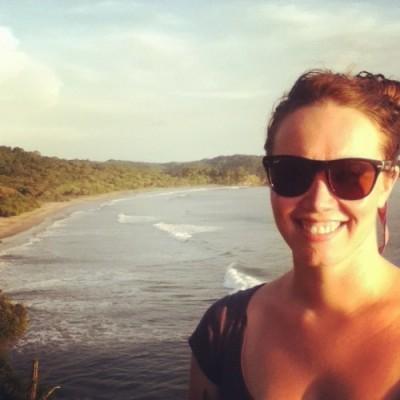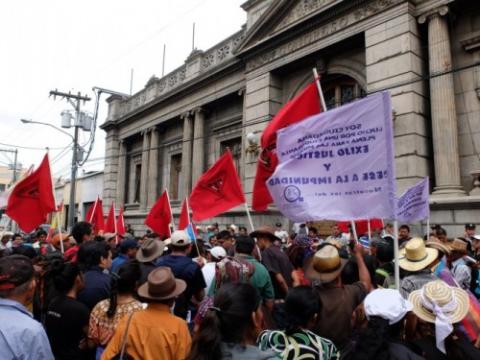Resource Extraction and Resistance
Geography doctoral student looks at environmental justice in Guatemala
As an undergraduate at the University of Iceland, Anna Sveinsdottir was interested in human-environment interactions. She initially decided to focus on studying the impacts of tourism, a path that led her to Nicaragua for fieldwork.
It was in Nicaragua that she met Matthew Taylor, a DU geography professor who has been crisscrossing Latin America for 26 years, studying everything from rural electrification to water resource management. Taylor encouraged Sveinsdottir to explore issues of natural resource extraction and land tenure.
“I fell in love with doing fieldwork in Central America,” she says.
Thus was Sveinsdottir’s path to DU. She’s currently a doctoral candidate in the Department of Geography and the Environment, with Taylor as her advisor along with Mariel Aguilar Støen at University of Oslo’s Centre for Development and the Environment. As her interests have evolved, she has found both the freedom and support at DU to develop as a researcher.
For her dissertation, Sveinsdottir is focusing on resource extraction in Guatemala, a country she has visited four times in the past few years. More specifically, she’s looking at violent conflicts that arise from local resistance to such extractive industries as mining and hydropower, with an emphasis on the role that the private sector and elites play in shaping such conflicts.
Foreign investment has increased in Guatemala over the past decade, after the Central American Free Trade Agreement (CAFTA) was signed between the United States and Guatemala in 2006. CAFTA has led to a boon in mining and hydropower, along with agricultural production for crops such as sugarcane and palm oil. Previously, Guatemala spent 36 years locked into a brutal civil war that only ended in 1996. Since then, the nation’s path to democracy has been rocky.
“Any form of resistance to resource extraction in Guatemala has been disproportionately violent and repressive,” Sveinsdottir says. “And these conflicts happen in a postwar context, in which the country has strong elites but weak state institutions. So it gets very complicated.”
One well-publicized case study that Sveinsdottir includes in her research is the Escobal silver mine in southeastern Guatemala. The mine is operated by a Guatemalan subsidiary of Canada’s Tahoe Resources. In 2011, local communities in the municipality of San Rafael Las Flores began resisting the project through protests, social mobilization and community referendums.
Despite this, the government granted Tahoe Resources permission to begin mineral exploration. In 2013, the company’s private security guards shot at peaceful protesters outside the mine. Seven victims have filed a lawsuit in Canadian courts against Tahoe. After the incident, the government declared a state of siege around the mine, deploying thousands of troops, suspending constitutional rights and arresting anti-mining activists.
“This type of repression has been very successful,” Sveinsdottir says. “The people involved in defending land rights are left in an extremely precarious situation.”
Protesters seeking electoral reforms in front of the Guatemalan Congress in 2015. The protests came in the wake of a corruption scandal involving then-president Otto Perez Molina, who was later arrested on corruption charges. Photo by Anna Sveinsdottir.
As she begins to formulate her dissertation, Sveinsdottir plans to look closer at the viewpoints of Guatemala’s private sector and elite classes. Their perspectives on resistance to resource extraction haven’t been studied by academics as extensively as those of protestors. She’s especially interested in how the private sector and elites interact with the government to shape responses to resistance.
“People I’ve spoken to in the private sector are eager to get their points across, especially because there has been so much international attention on these types of conflicts in Latin America,” she says.
Sveinsdottir hopes that her research will add to a body of knowledge that leads to better policies and practices with regards to social and environmental justice in Latin America.
“There’s something about connecting with people involved in a real struggle. They share stories and open their lives to you,” she says. “As a researcher at a North American university, you are privileged to have a voice with which to tell the world.”









